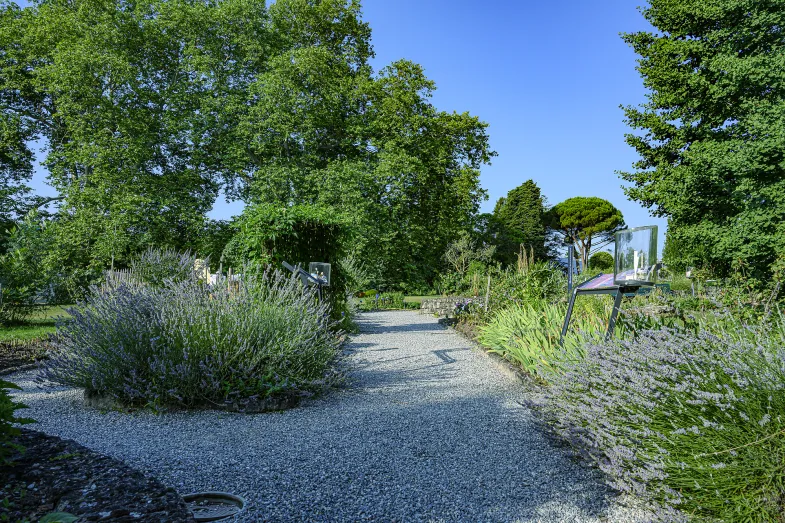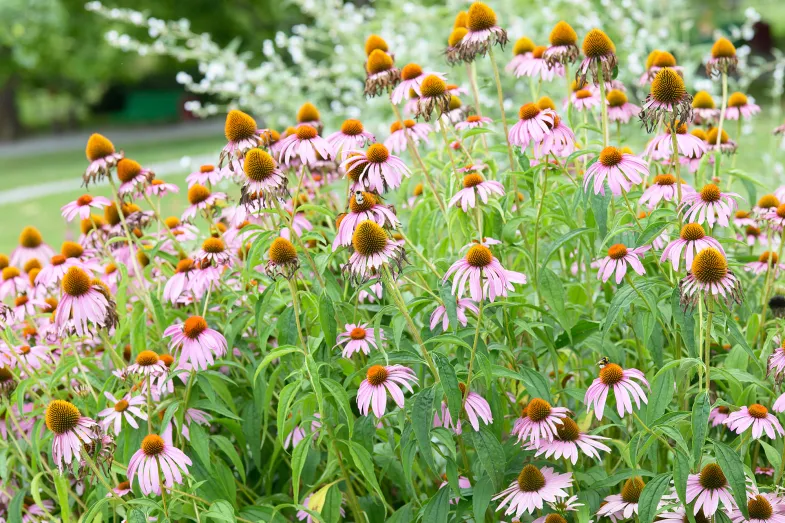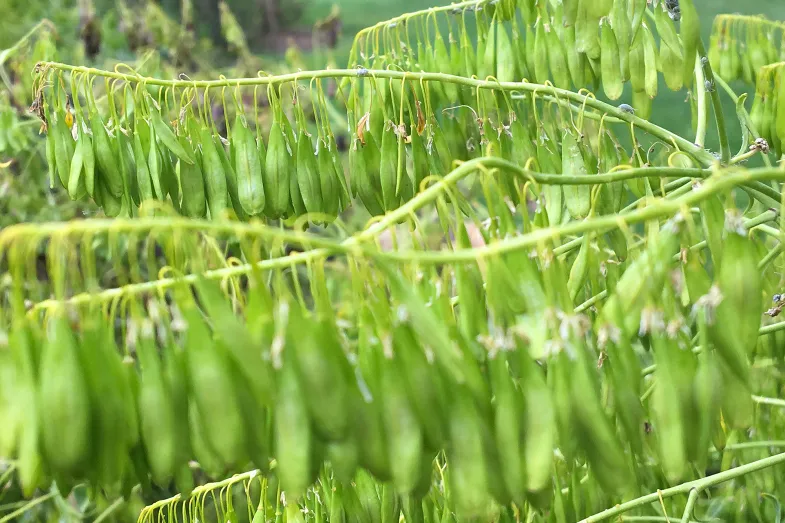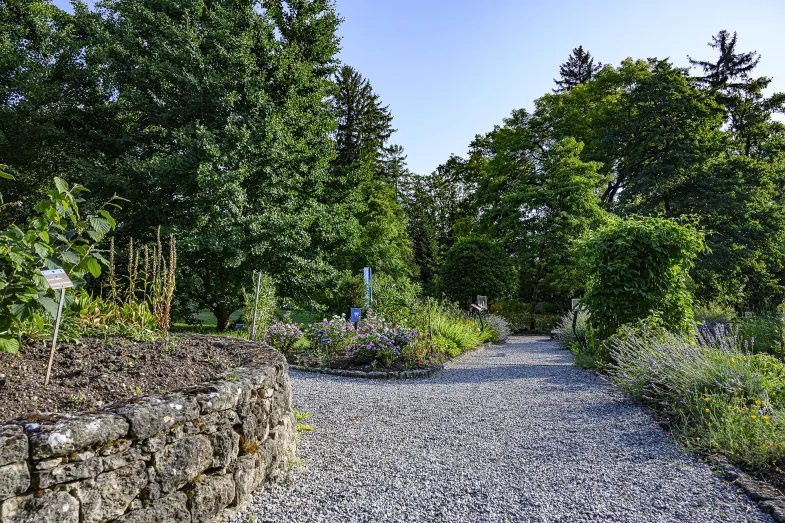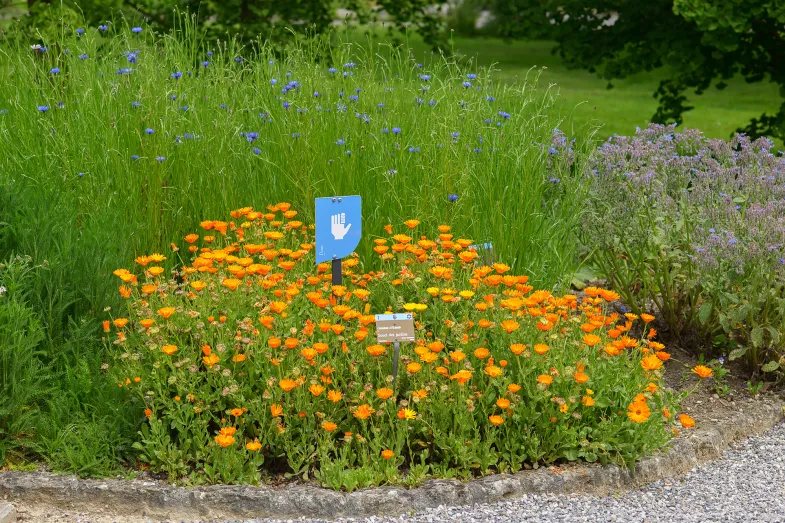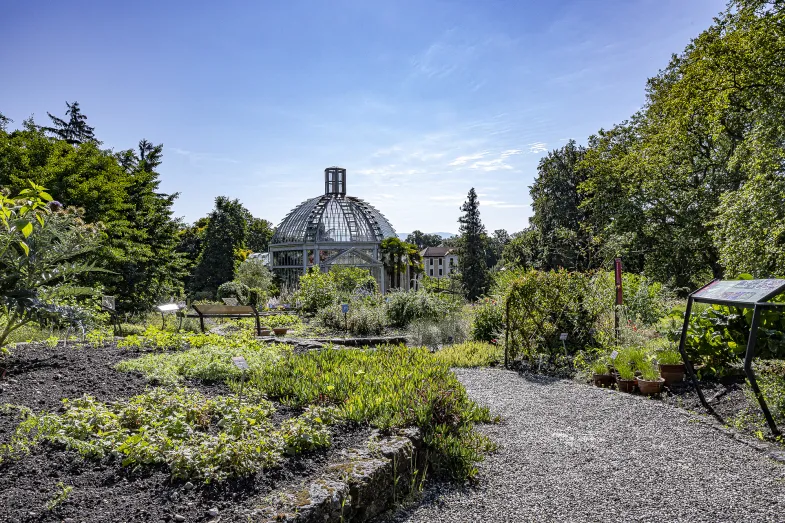Ethno-botanical gardens
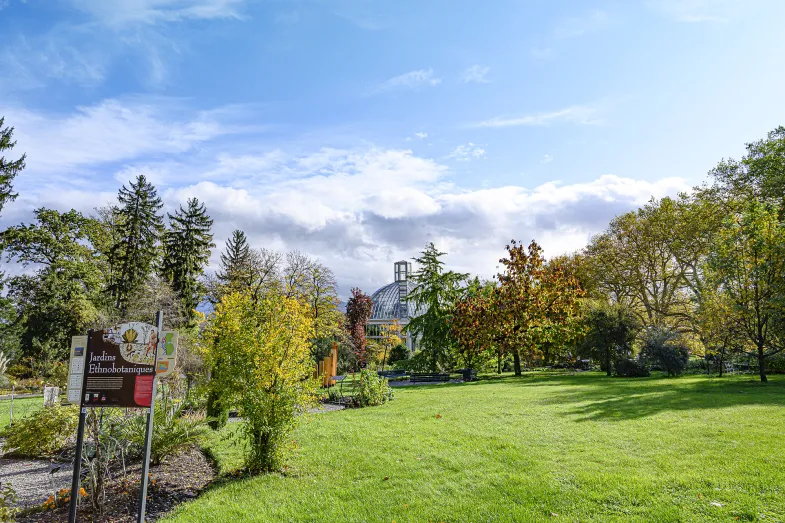
In the ethno-botanical gardens, the planted terraces display the many relationships between humans and the plant world.
Did you know, for instance, that the velcro on your shoes is a Swiss invention inspired by the fruits of the burdock (Arctium lappa)? That the most expensive spice in the world comes from a variety of crocus (Crocus sativus) grown in Mund in the Haut-Valais? That chewing gum was originally made out of a plant gum that comes from the sap of a sapodilla (Manilkara zapota), a tree from the tropical rain forests?
A thematic display
Plentiful discoveries organised around four themes await you in the terraces of plants:
- The food garden: condiments, foodstuffs, forgotten vegetables, foragings and bush flavours
- The medical garden: medicinal plants, phytotherapeutic effects and plant-based remedies
- The economic garden: perfumes, dyes (Isatis tinctoria, used since antiquity for the pastel blue obtained from its leaves), fibres, sugars, oils and resins
- The garden of useful plants: vine, wheats, segetal flora, fermented drinks, wood, weaving, household uses, biological control agents, sacred plants, poisons
We share a fascinating history with useful plants, both wild and domesticated. This display uncovers a range of aspects of them with a collection the winter garden’s collection of functional plants. History shows we only tend to properly look after what we know and make use of…so set off to find out all about useful plants – an original and thrilling way of learning about the plant world.
Une présentation thématique
De nombreuses découvertes organisées autour de quatre thématiques vous attendent dans nos terrasses jardinées:
- Le Jardin alimentaire: condimentaires, alicaments, légumes oubliés, cueillettes sauvages et saveurs buissonnières
- Le Jardin médicinal: plantes médicinales, effets phytothérapeutiques et médicaments issus du végétal
- Le Jardin économique: parfums, teintures (Isatis tinctoria, utilisée dès l’Antiquité pour le bleu pastel obtenu à partir de ses feuilles), fibres, sucres, huiles et résines
- Le Jardin des utilités botaniques: vigne, blés, messicoles, boissons fermentées, bois, tressage, usages ménagers, lutte biologique, plantes sacrées et toxiques
Nous avons une histoire commune captivante avec les plantes utiles, sauvages ou domestiquées. Nous vous en dévoilons divers aspects à travers cette présentation qui est complétée par la collection des plantes utilitaires du Jardin d’hiver. Comme l’histoire le démontre, nous avons tendance à ne bien protéger que ce que nous connaissons et utilisons… Alors partez à la découverte des utilités botaniques, c’est une façon originale et passionnante de vous familiariser avec le monde végétal.
